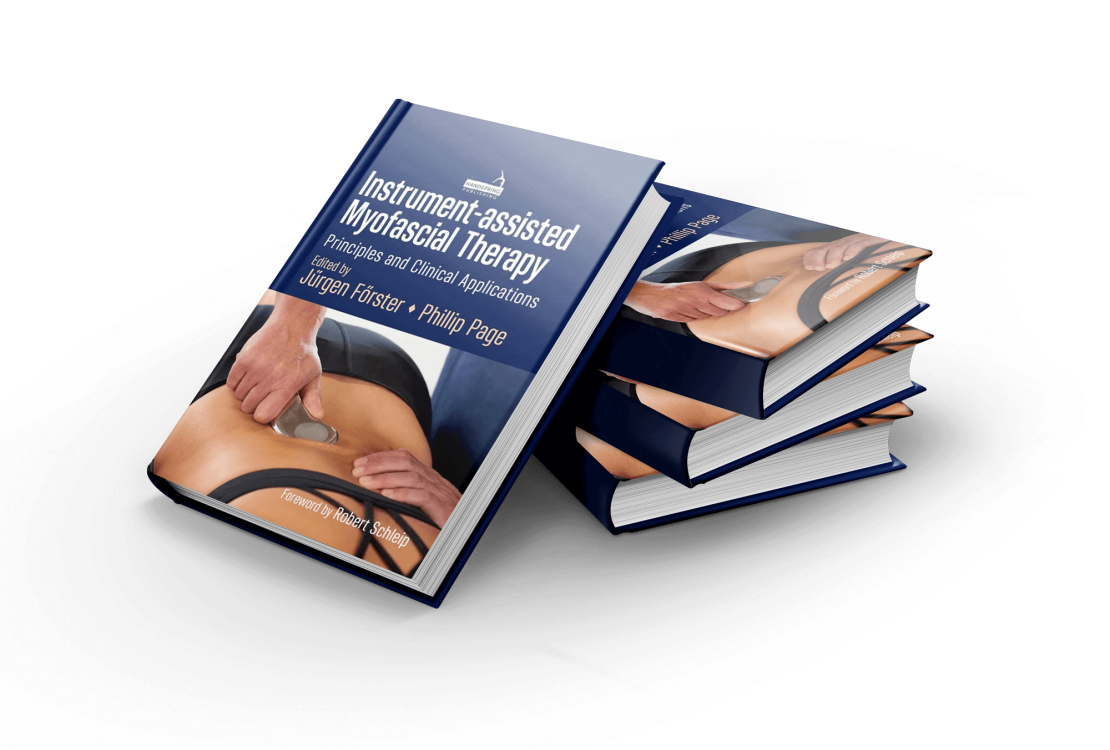The Course
Content
The aim of the course is to enable the participant to successfully apply the IMAT techniques directly on the patient. The theoretical part is accordingly reduced to the relevant. Thus, there is a brief insight into the topic of fascia, the possibilities of device-assisted treatment and the current state of research.
In the practical part, the focus is on the clinical application of the instruments. Using different instruments, the proven techniques for effective and efficient treatment will be demonstrated and practiced on the test person.
The course is interactive and the active participation of the participants is explicitly desired. Therefore, the treatment of the following areas is presented:
- Cervical spine and head
- Shoulder
- Elbow, wrist and hand
- Thoracic spine and chest
- Lumbar spine and sacroiliac joint
- Hip and pelvis
- Knee
- Ankle & foot
This is done following a respective treatment protocol is first presented on one definite aerea. It is demonstrated exactly which instrument is to be used and in which starting position the therapy is carried out. The progressions in the therapy are then demonstrated, as well as the possible treatment options within the entire myofascial system. A special lab is dedicated to the treatment of scars.
Modalities
The course can be organized both as a classic model and as an individually tailored model. The classic course is addressed to physiotherapists. However, it is possible to organize a course for service providers with other medical backgrounds. An informational lecture on IAMT is also offered under certain conditions.
The recommended number of participants is between 6 and 16, but it is also customizable.
Please contact me for a detailed presentation or individual planning!
Speaker
Dr. rer. medic. Jürgen Förster, PT, MA
Professional education and experience
- Graduat in Kinésithérapie
- Kinésithérapeut in various clinics in the Aachen city regions, including the University Hospital Aachen in the field of orthopedics – traumatology
- Care of professional and non-professional athletes of different team and individual sports, among others in soccer, diving, and cycling
- Kinésithérapeutic care of the CHIO Aachen, World Equestrian Festival and the World Championships
- Member of the Thera-Band Academy and the Artzt Institute
- Master trainer for Flossing and Flowin
- Basic instructor swimming and downhill skiing
Scientific competences
- Doctorate (Doctor rerum medicinalium) at the Medical Faculty of the RWTH Aachen University
- Supervision of numerous bachelor theses in the field of physiotherapy
- Partner of the BMBF project „MediWeCo Physio – Media Supported Teaching & Learning of Motor Skills“
- GPS basic training AMG studies
Pedagogical proof of competence
- Certificat d’Aptitute Pédagogique (teaching qualification diploma)
- Certificate „Medizindidaktik NRW“ for teachers in medicine
- Lecturer at the FH Aachen in the field of Physiotherapy
- Lecturer at the Medical Faculty of RWTH Aachen University in the field of Physiotherapy
- Lecturer at the Medical Faculty of RWTH Aachen University in the field of „Rehabilitation, Physical Medicine, Natural Remedies“ (since 2021)
Management skills
- Master of Arts in Management of Healthcare and Social Institutions
- Certificate „Management Competence for Senior Staff“ of the University Hospital Aachen
Publications
- Förster J Page P: Instrument Assisted Myofascial Therapy. Pencaitland: Handspring Publishing. 2022.
- Förster J: Instrumentengestützte myofasziale Techniken in der Physiotherapie. Stuttgart: Thieme Verlag. 2018.
- Siebert et al S2k-Guideline on Meniscal Disease: Non-operative and Surgical Management. Z Orthop Unfall. 2018 Mar 12. doi: 10.1055/s-0044-101558.
- Förster J: Die Masche mit der Schlaufe – Funktionelles Training mit dem CLX-Band. Stuttgart: Thieme Verlag: Physiopraxis 2019, 10, 36-398.
- Schemmann U Aretz P Förster J Ohnesorge-Radtke U: Schüler produzieren Videos für Schüler- Evidenzbasierte Praxis, Medienkompetenz und selbstgesteuertes Lernen im Projekt. München: 2014, Zeitschrift für Physiotherapeuten, 66, 78-81.
- Förster J: Die Entwicklung der Physiotherapie seit Gründung der Bundesrepublik Deutschland. In: Karenberg A Groß D Schmidt M (Hrsg.): Forschungen zur Medizingeschichte. Beiträge des „Rheinischen Kreises der Medizinhistoriker“. Kassel: kassel university press: 2013, 415 – 427.
- Förster J: Die Entwicklung der Physiotherapie seit Gründung der Bundesrepublik Deutschland. In: Groß D Rosentreter M (Hrsg.): Der Patient und sein Behandler: Die Perspektiven der Medical Humanities. Anthropina. 2011. Aachener Beiträge zur Geschichte, Theorie und Ethik der Medizin, Band 5. Münster: LIT Verlag: 201 – 215.
- Delaire M Förster J: La résistance élastique progressive: Historique et principes de baseProgressive elastic resistence: history and fundamental principles; La Revue de la Kinésithérapie, Volume 9, Issue 94, October 2009, 30-33.
- Delaire M Förster J: Modalités d’utilisation des résistances élastiques progressivesModalities for the use of progressive elastic resistance La Revue de la Kinésithérapie, Volume 9, Issue 94, October 2009, 34-41.
- Siebert Ch Breuer Ch Krüger S Miltner O: Tipps und Tricks für Sportmediziner, Springer-Verlag (2004). Mehrere Kapitel.
- Förster J: Darstellung des nozizeptiven somatomotorischen Blockierungseffektes (Brügger) mittels der Isokinetik? – Eine Fallbesprechung. München. 1999. Zeitschrift für Physiotherapie, 04.
